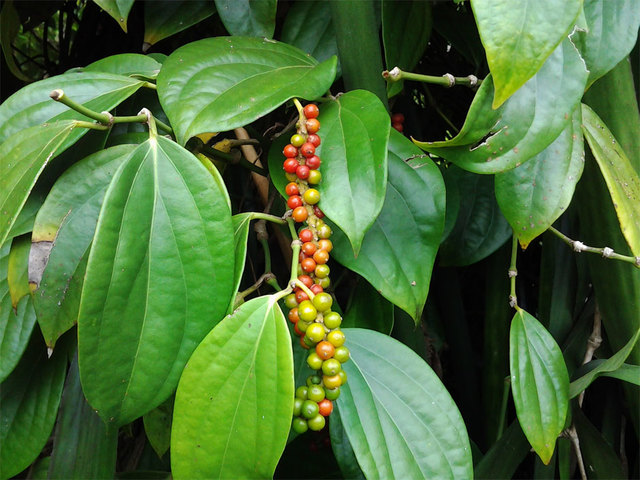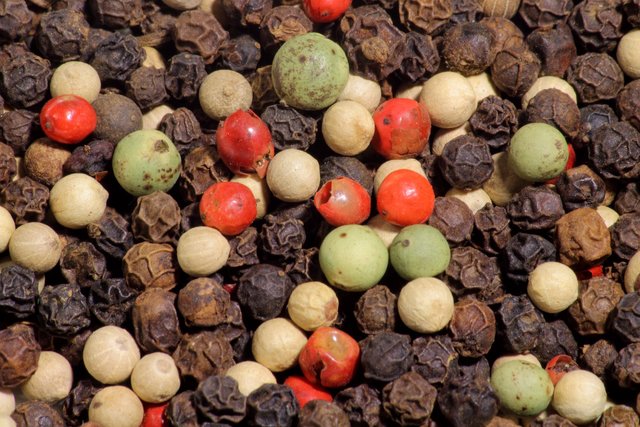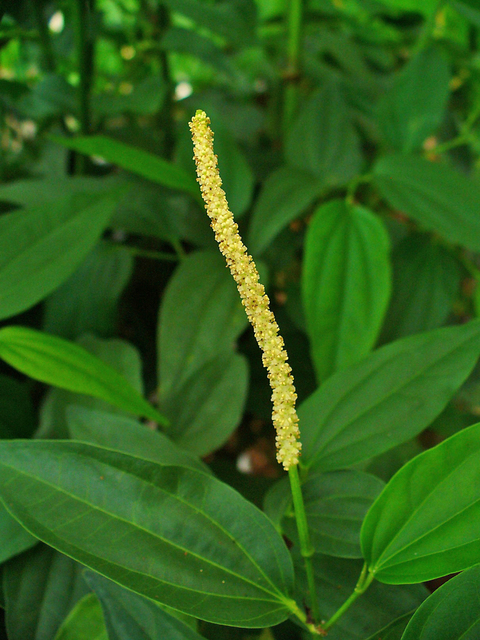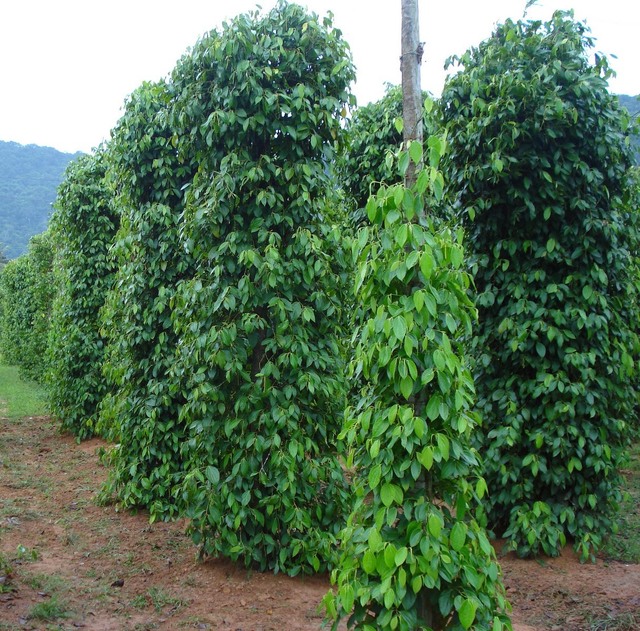Black pepper (Piper nigrum) is a perennial vine native to the hot, humid lowlands of southern India. With our similar tropical climate, this popular and valuable spice can also grow well here. ADVERTISING Black pepper (Piper nigrum) is a perennial
Black pepper (Piper nigrum) is a perennial vine native to the hot, humid lowlands of southern India. With our similar tropical climate, this popular and valuable spice can also grow well here.
As early as the 10th century, spice routes carried peppercorns from India to Europe. Today, the plant is grown commercially in many tropical locales and traded globally. Pepper is ubiquitous on the tables of homes and restaurants worldwide and flavors and preserves numerous food products. A member of the Piperaceae family, it shares lineage with kava (awa or Piper methysticum) and betel leaf (Piper betle). Each is a culturally important tropical plant.
The black pepper plant can grow stems 15 feet long that need support to flourish. It grows well on trees in partial shade and can likely be adapted to citrus, avocado, coffee or cacao orchards in Hawaii. The dark green, heart shaped, leathery leaves are attractive, distinguished by parallel veins running off the midrib.
Within three years, new black pepper plants produce flower spikes along the main stem. The tiny yellow-green blossoms usually self-pollinate and within nine months develop into fruits or berries. They are green at first, ripening to red at maturity.
The green fruit can be pickled or dried. The maturing fruit is immersed in boiling water for 10 minutes after picking then dried to a dark brown or black color. The less pungent white pepper is produced by keeping ripe berries moist for a few days until the skin can be removed easily. Then they are dried to white. Pink peppercorns, which are sometimes mixed with the fruit of the pepper vine, are actually from the Christmas berry tree (Schinus terebinthifolia).
Black pepper plants are often available or can be requested at local nurseries. If you want to propagate from an existing plant, take a cutting with a few nodes from a secondary runner. Rooted in a moist medium of vermiculite and perlite, cuttings are usually ready to transplant in about six months. Growing from seed requires soaking fresh seeds, planting them in a growing medium with organic matter and waiting for germination. Once they reach 6 inches, they can be out-planted. A YouTube video at https://www.youtube.com/watch?v=XOoBqQmz8jc gives information on growing black pepper vines in pots.
New plants should be placed near a supporting structure in partial shade in soil that drains well. Though not very drought tolerant, they are prone to root rot, so water only when the top of the soil is dry. Fertilizing with a balanced, slow release fertilizer several times a year will encourage new growth, flowering and fruiting. Limiting growth to three main runners will also encourage production. Prune to control size. The few pests that appear can be treated with a combination of safer soap and neem oil.
Black pepper is known to stimulate salvation and the production of gastric juices helping the absorption of food nutrients into the blood steam. This revered spice can easily be grown here in Hawaii. Give it a try.
Diana Duff is a plant adviser, educator and consultant living on an organic farm in Captain Cook.






